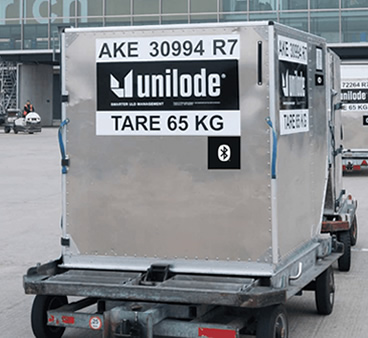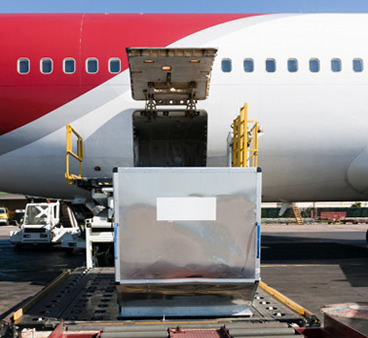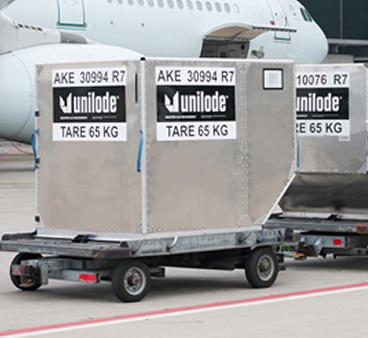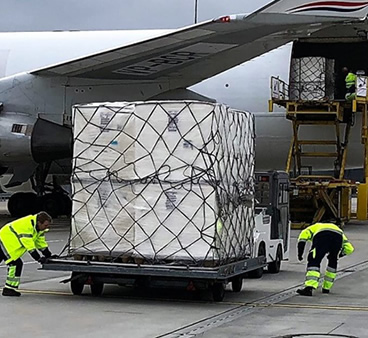- Email charter@asacaviationgroup.com
- 24/7 Customer Care +254-20-808-7-808
- Regional Office KAHL Terminal Cargo Centre, JKIA


Containers and pallets are identified by a unique combination of letters and numbers. The IATA standard system comprises 3 leading letters, 4 or 5 numerals and 2 trailing letters. The 3 leading letters (eg AKE, PMC) define the type of ULD, the 4 or 5 numerals are a unique number allocated by the operator and the 2 trailing letters show a 2 letter ICAO code which indicated the owner which may be an airline (eg BA) or a ULD leasing company (eg JG). Full details of the coding standards are found in the IATA ULD Technical Manual. ULDs may also carry a bar code, which will usually replicate the visible IATA-standard code.
CERTIFICATION OF ULDS: Containers, pallets, and nets are in most cases required to be approved for use (“certified”) by the airworthiness authority for the country where the manufacturer is located. Currently our certification standards are:
• FAA - Technical Standards Order (TSO) C90c and
• EASA - ETSO C90c


CERTIFIED AND NON CERTIFIED ULDS:The majority of ULD are usually certified ULD, however there are some exceptions. These can be identified by the first letter of their identification code:
• CERTIFIED CONTAINER - A
• NON CERTIFIED CONTAINER - D
• CERTIFIED PALLET - P
• NON-CERTIFIED PALLET - F
Certified ULD must be used on all aircraft which have holds that are of insufficient strength to contain their contents during extreme flight conditions and rely on the ULD being locked to the floor of the hold. Non certified ULD may be used in an aircraft having a hold structure which is deemed capable of withstanding the forces from the contents during extreme flight conditions. An example of this is the B767 Series, which not only has holds designed to withstand these forces but also uses a base size for its containers that is unique to the aircraft type (units known as DPE (LD2), DQP (LD4) and DQF (LD8)).
While airlines may choose to make their own definitions as to exactly what types of ULD may or may not be loaded on their aircraft, it should be remembered that many ULD are transferred between aircraft and even other airlines before reaching their destination. Whether certified or non certified, no damaged ULD or pallet should be used for aircraft loading purposes.
We always check the unit before starting loading. Any damage found must be below the required damage limits otherwise the ULD is not airworthy. If the cargo is to be protected from possible rain damage by the use of plastic sheets, these should be taped inside the container. The use of plastic sheeting around the outside of the container is subject to restrictions: the material must meet FAA/ EASA burn rate requirements and the manufacturers plate (TSO Plate) must remain visible.
Carry out a pre loading check to determine that the pallet and net are serviceable before loading begins. Particular attention should be given to the cargo net being used to secure the load to the pallet. Cargo nets are subject to severe wear and tear and are often found to be unserviceable. It is important to determine that the net is serviceable before starting to load the pallet.
The rapid growth of air travel, especially air cargo, over the past 10 years has resulted in some ULDs being handled in substandard facilities using inappropriate handling practices. Any resulting damage is not only a cost to aircraft operators but may also create a condition which is hazardous to aircraft safety. The various published industry standards covering handling of ULD all call for ULD to be supported at all times on dollies/roller beds/racking. These standards also state clearly that unless a ULD is specifically designed to be handled by a forklift it should not be so handled; otherwise damage may result.
ASAC Aviation Solutions: Empty containers are always be stored in suitable container racking, set up for easy transfer to dollies or other handling equipment without the use of a forklift. Outdoors racking are usually equipped to prevent containers blowing away in windy conditions. Empty containers are only stacked where there exists proper training and controls and where the containers are designed to be lifted by forklift.


SAFETY THREATS: The primary purpose of ULD is to improve flight safety compared to bulk loading of holds. Whilst a serviceable ULD, properly loaded, will indeed achieve this, a widespread lack of attention to/ awareness of ULD damage can result in risk arising from the use of containers that are not within their allowable damage limits.
Damaged and/or improperly loaded ULD present a hazard to operators, aircraft systems and Structure, cargo and baggage and GSE. Used correctly ULD will remain within their safety limits for many years, requiring only minor repairs to wear and tear type damages. Incorrect handling of ULD, particularly the indiscriminate use of forklifts will result in ULD damage rendering them unserviceable for use.
Download our Aircraft Brochure